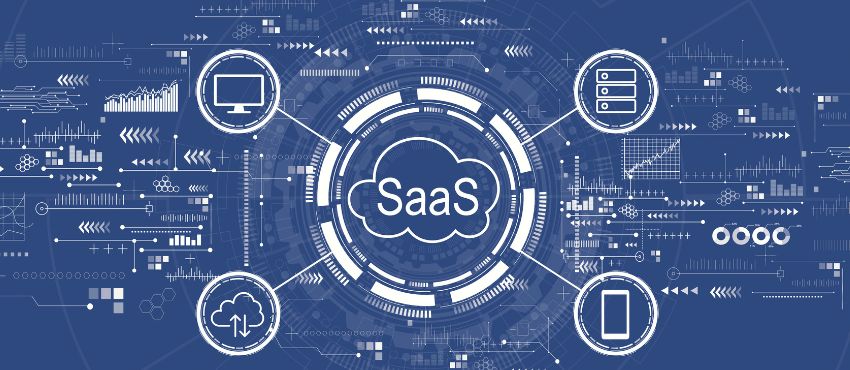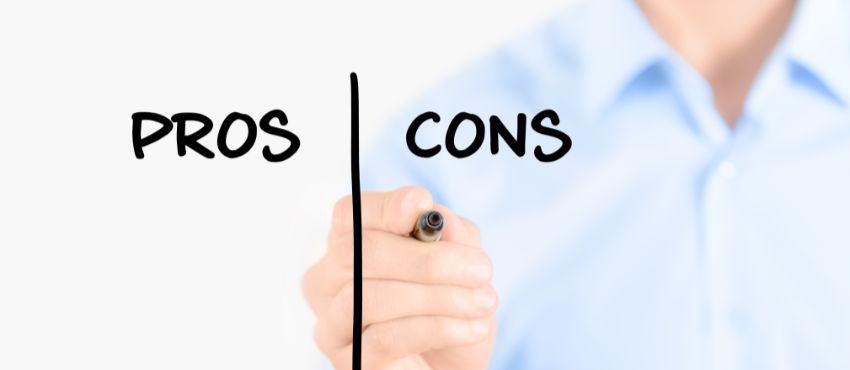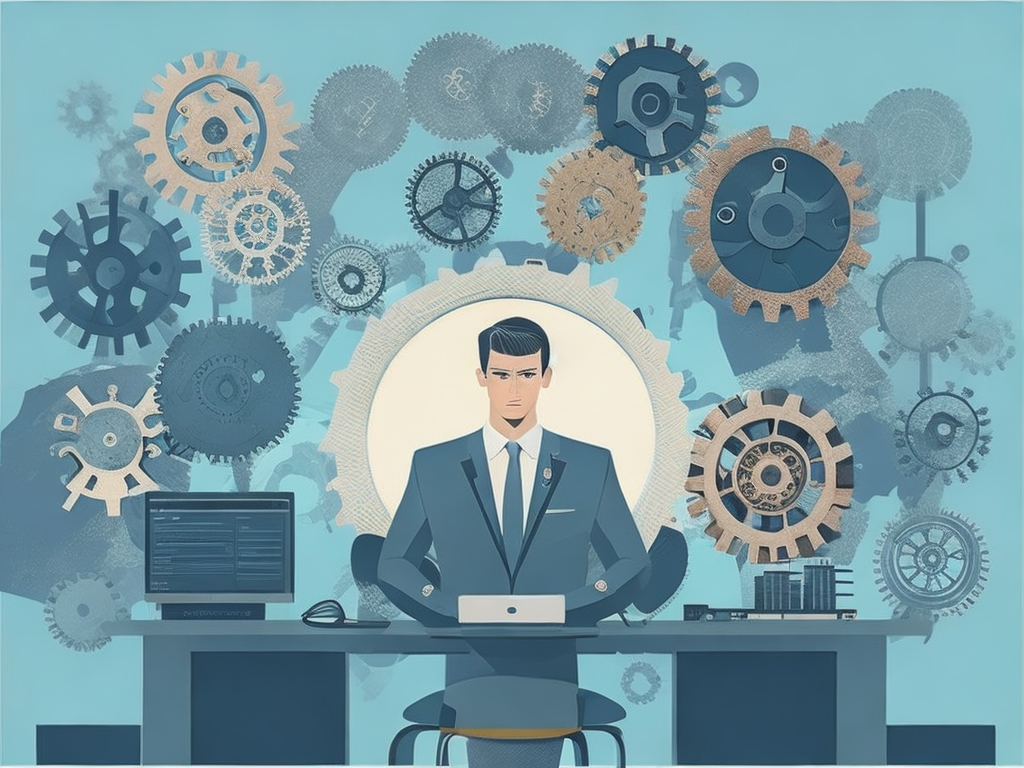SaaS vs Traditional Software
In the ever-evolving world of technology, the debate between SaaS vs traditional software has become a hot topic. It’s crucial to understand the differences between these two models, as they can significantly impact how businesses operate and grow.
Understanding SaaS and Traditional Software
Let’s start by defining our terms. Software as a Service (SaaS) is a software delivery model where applications are hosted by a service provider and made available to users over the Internet. On the other hand, traditional software refers to applications that are installed directly on a user’s computer or server.
The evolution of software delivery models has been driven by technological advancements and changing business needs. Traditional software was the norm in the early days of computing, but the rise of the internet and cloud computing has led to the growth of SaaS. This shift has transformed how businesses use and manage software.

Key Differences Between SaaS and Traditional Software
When comparing SaaS vs traditional software, several key differences come to light:
Accessibility and Installation
SaaS applications are accessed via the internet, eliminating the need for installation on individual devices. This contrasts with traditional software, which requires installation on each user’s computer or server.
Ownership and Management
With SaaS, the service provider owns, manages, and updates the software. Users simply access the service via a subscription. In contrast, with traditional software, the user or their organization is responsible for managing and maintaining the software.
Customization Capabilities
Traditional software often allows for more customization as it can be tailored to meet the specific needs of a business. SaaS, on the other hand, is generally less flexible in terms of customization but offers the advantage of uniformity across the organization.
Delivery and Update Mechanisms
Updates in a SaaS model are handled by the service provider and are typically rolled out to all users simultaneously. This ensures that all users are always working with the latest software version. With traditional software, updates must be manually installed, which can be time-consuming and lead to inconsistencies if some users are on different software versions.
In the next sections, we’ll delve deeper into the pros and cons of each model, the technical and economic implications, and the business models of SaaS vs traditional software.

Pros and Cons of SaaS and Traditional Software
Regarding SaaS vs traditional software, each model has its own set of advantages and disadvantages.
Advantages of SaaS
- Ease of Access: SaaS applications can be accessed from anywhere with an internet connection, making them ideal for remote work or teams spread across different locations.
- Cost-Effective: With SaaS, there’s no need for businesses to invest in hardware or spend resources on software maintenance. This can lead to significant cost savings.
- Accessibility: SaaS applications are accessible from anywhere, at any time, requiring only an internet connection. This global accessibility supports remote work and ensures that team members can collaborate effectively regardless of their location.
- Automatic Updates: SaaS providers handle all updates, ensuring users always have the latest features and security patches.
- Scalability: SaaS solutions are highly scalable, allowing businesses to easily add or remove users as their needs change. This is particularly beneficial for growing businesses or those with fluctuating demand.
- Rapid Deployment: SaaS applications are typically quicker to deploy than traditional software, as there’s no need for installation on individual devices. This means businesses can start using the software sooner.
- Reduced IT Burden: Since the SaaS provider handles all the technical aspects, including maintenance, updates, and security, the burden on a company’s IT department is significantly reduced.
- Collaboration and Mobility: SaaS applications can be accessed from any device with an internet connection, making it easier for teams to collaborate, even when members are geographically dispersed. This also supports a mobile workforce, as employees can access the software from home, client sites, or while traveling.
- Automatic Backups: Most SaaS providers perform regular backups of data, which can provide peace of mind and help ensure business continuity in the event of data loss.
- Trial Periods and Subscriptions: Many SaaS providers offer trial periods, allowing businesses to test the software before committing. Additionally, the subscription model provides flexibility, as businesses can often switch plans or cancel their subscription if the software no longer meets their needs.
- Integration Capabilities: SaaS applications often come with APIs that allow them to integrate with other software, creating a seamless workflow and reducing the need for manual data transfer between systems.
- Environmentally Friendly: By reducing the need for physical hardware and on-site servers, SaaS can be more environmentally friendly than traditional software.
Disadvantages of SaaS
- Dependence on the Internet: SaaS applications require a stable Internet connection. Any disruptions can affect access to the software.
- Limited Customization: SaaS applications may not offer the same level of customization as traditional software.
- Data Security Concerns: Hosting data on external servers raises concerns about data security and privacy, although reputable providers implement stringent security measures.
Advantages and Disadvantages of SaaS Table:
| Advantages | Disadvantages |
| Ease of Access: Can be accessed from anywhere with an internet connection | Dependence on the Internet: Requires a stable Internet connection |
| Cost-Effective: No need for hardware investment or software maintenance | Limited Customization: May not offer extensive customization options |
| Accessibility: SaaS applications are accessible from anywhere, at any time, requiring only an internet connection | Data Security Concerns: Hosting data on external servers raises concerns about data security |
| Automatic Updates: Providers handle updates for the latest features and security patches | |
| Scalability: Highly scalable to accommodate changing business needs | |
| Rapid Deployment: Quick deployment without individual device installations | |
| Reduced IT Burden: Provider handles maintenance, updates, and security | |
| Collaboration and Mobility: Allows easy collaboration and access from any device | |
| Automatic Backups: Regular data backups for business continuity | |
| Trial Periods and Subscriptions: Offers trial periods and flexible subscriptions | |
| Integration Capabilities: Integration with other software for seamless workflow | |
| Environmentally Friendly: Reduces the need for physical hardware and on-site servers |
Advantages of Traditional Software
- Control: With traditional software, businesses have full control over their software, including when and how to update it.
- Customization: Traditional software can often be customized to meet the specific needs of a business.
- Offline Access: Unlike SaaS, traditional software does not require an internet connection, allowing users to access and use the software without connectivity concerns.
Disadvantages of Traditional Software
- Upfront Costs: Traditional software often requires significant upfront investment in licenses, hardware, and implementation.
- Maintenance: Businesses are responsible for maintaining and updating traditional software, which can be resource-intensive.
- Scalability Challenges: Scaling traditional software often requires additional hardware or software licenses, making it less flexible than SaaS solutions.
Advantages and Disadvantages of Traditional Software Table:
| Advantages | Disadvantages |
| Control: Full control over software updates and management | Upfront Costs: Requires significant upfront investment |
| Customization: Allows extensive customization for specific business needs | Maintenance: Businesses responsible for maintenance and updates |
| Offline Access: Unlike SaaS, traditional software does not require an internet connection | Scalability Challenges: Scaling traditional software often requires additional hardware or software licenses |
For instance, a company like Adobe moved from a traditional software model with their Creative Suite products to a SaaS model with Adobe Creative Cloud. This transition allowed Adobe to provide more frequent updates, improve collaboration features, and offer more flexible pricing options.
A Side-by-Side Comparison: SaaS vs Traditional Software
| Feature | SaaS | Traditional Software |
|---|---|---|
| Accessibility | Accessible anywhere with internet | Installed on specific devices; accessible offline |
| Cost | Subscription-based; lower upfront costs | Higher upfront costs for licenses and hardware |
| Scalability | Easily scalable with demand | Requires additional purchases to scale |
| Updates | Automatic and handled by the provider | Must be managed and installed by the user |
| Customization | Generally less customizable | Highly customizable to meet specific needs |
| Data Security | Dependent on provider’s security measures | User’s responsibility to secure data |
| Internet Dependency | Requires a stable internet connection | Can be used offline |

Technical Aspects of SaaS vs Traditional Software
The technical differences between SaaS and traditional software are rooted in how they’re built, delivered, and maintained.
How SaaS and Traditional Software Are Built
SaaS applications are built to be multi-tenant, meaning a single instance of the software serves multiple users or organizations. This differs from traditional software, which is typically designed for single-tenant use, with each user or organization having their own instance of the software.
The Role of the Cloud in SaaS
The cloud plays a crucial role in SaaS. SaaS applications are hosted on the cloud, and users access them online. This eliminates the need for users to install and maintain the software on their own devices or servers.
Security Considerations in Both Models
Security is a critical consideration in both SaaS and traditional software. SaaS providers typically have robust security measures in place, including encryption, access controls, and regular security audits. However, the responsibility for security in a SaaS model is shared between the provider and the user.
With traditional software, the user is fully responsible for security. This includes protecting against malware, managing user access, and ensuring data is backed up and recoverable in the event of a disaster. In the next sections, we’ll explore the economic implications and business models of SaaS vs traditional software.
Economic Implications of SaaS and Traditional Software
When considering SaaS vs traditional software, it’s essential to understand the different cost structures and long-term financial implications for businesses.
Cost Structures
The cost structure of SaaS is typically subscription-based, with users paying a recurring fee to access the software. This can be more affordable for businesses, especially in the short term, as it eliminates the need for large upfront investments in software licenses and hardware.
On the other hand, traditional software often requires a significant upfront investment. This includes the cost of the software license, as well as any hardware needed to run the software. Additionally, businesses may incur ongoing costs for maintenance and updates.
Long-Term Financial Implications
Over the long term, the total cost of ownership can be lower for SaaS, especially when factoring in the costs of maintaining and updating traditional software. However, it’s important to note that the total cost can vary depending on the specific software and the business needs.

The Business Models: SaaS vs Traditional Software
The business models of SaaS and traditional software companies differ significantly in terms of how they operate, generate revenue, and strategize for growth.
How They Operate
SaaS companies operate by hosting software on their servers and providing access to users over the Internet. This allows them to serve many customers with a single instance of the software, leading to economies of scale.
Traditional software companies, on the other hand, typically sell licenses to their software, which users then install and run on their own hardware.
Revenue Models and Growth Strategies
SaaS companies generate revenue through subscription fees, which provide a steady stream of recurring revenue. This allows them to invest in continuous development and improvement of their software.
Traditional software companies often rely on revenue from software licenses and, in some cases, fees for maintenance and support. They may also generate revenue from upgrades and new versions of their software.

Future Trends in Software Delivery
The software industry is continually evolving, and current trends suggest a growing popularity of SaaS. The convenience, scalability, and cost-effectiveness of SaaS make it an attractive option for many businesses.
However, traditional software is unlikely to disappear entirely. In some cases, particularly where high levels of customization or control are required, traditional software may still be the preferred choice.
As we move forward, we may see a continued shift towards hybrid models, where businesses use a mix of SaaS and traditional software to meet their specific needs. The future of software delivery is likely to be characterized by flexibility, with businesses choosing the models that best fit their operational requirements, budget, and strategic goals. Stay tuned for the conclusion, where we’ll recap the key points and provide some final thoughts on the topic of SaaS vs traditional software.
Industry-Specific Implications of Choosing SaaS vs Traditional Software
The choice between SaaS and traditional software can have significant implications depending on the industry. For instance, the logistics industry, which often requires real-time updates and remote access, might lean towards SaaS solutions. Ultimately, the choice between SaaS and traditional software should be guided by a business’s specific needs, resources, and strategic goals. It’s not a one-size-fits-all decision, and the best solution may involve a mix of both.
As we move forward in this digital age, the debate of SaaS vs traditional software will continue to evolve. Stay informed, consider your options carefully, and choose the model that best supports your business’s growth and success.
Conclusion
In our exploration of SaaS vs traditional software, we’ve covered a lot of ground. We’ve delved into the definitions, key differences, pros and cons, technical aspects, economic implications, business models, and future trends of both software delivery models.
To recap, SaaS offers ease of access, cost-effectiveness, and automatic updates but requires a stable internet connection and may offer limited customization. Traditional software provides control and customization but has higher upfront costs and maintenance responsibilities. From a technical standpoint, SaaS leverages the power of the cloud and offers multi-tenancy, while traditional software requires installation on individual devices. Security is a shared responsibility in SaaS and solely the user’s responsibility in traditional software.
Economically, SaaS operates on a subscription-based model, potentially offering a lower total cost of ownership, while traditional software requires a significant upfront investment. The business models also differ, with SaaS companies operating on a recurring revenue model and traditional software companies relying on license sales and upgrade fees.
Looking ahead, the trend is leaning towards SaaS due to its scalability and cost-effectiveness, but traditional software still holds value in scenarios requiring high customization or control.
FAQ’s
The main difference lies in how they are accessed and managed. SaaS is accessed over the internet and managed by the service provider, while traditional software is installed and managed on the user’s own devices or servers.
SaaS is typically subscription-based, meaning users pay a recurring fee rather than a large upfront cost. Additionally, the SaaS provider handles maintenance and updates, reducing the need for in-house IT resources.
Generally, traditional software can offer more customization as it can be tailored to meet the specific needs of a business. However, many SaaS providers now offer a range of customization options to meet the diverse needs of their customers.
Yes, SaaS can be very secure. Most SaaS providers implement robust security measures, including data encryption, secure user authentication, and regular security audits. However, users also have a role to play in ensuring data security, such as using strong passwords and managing user access effectively.
